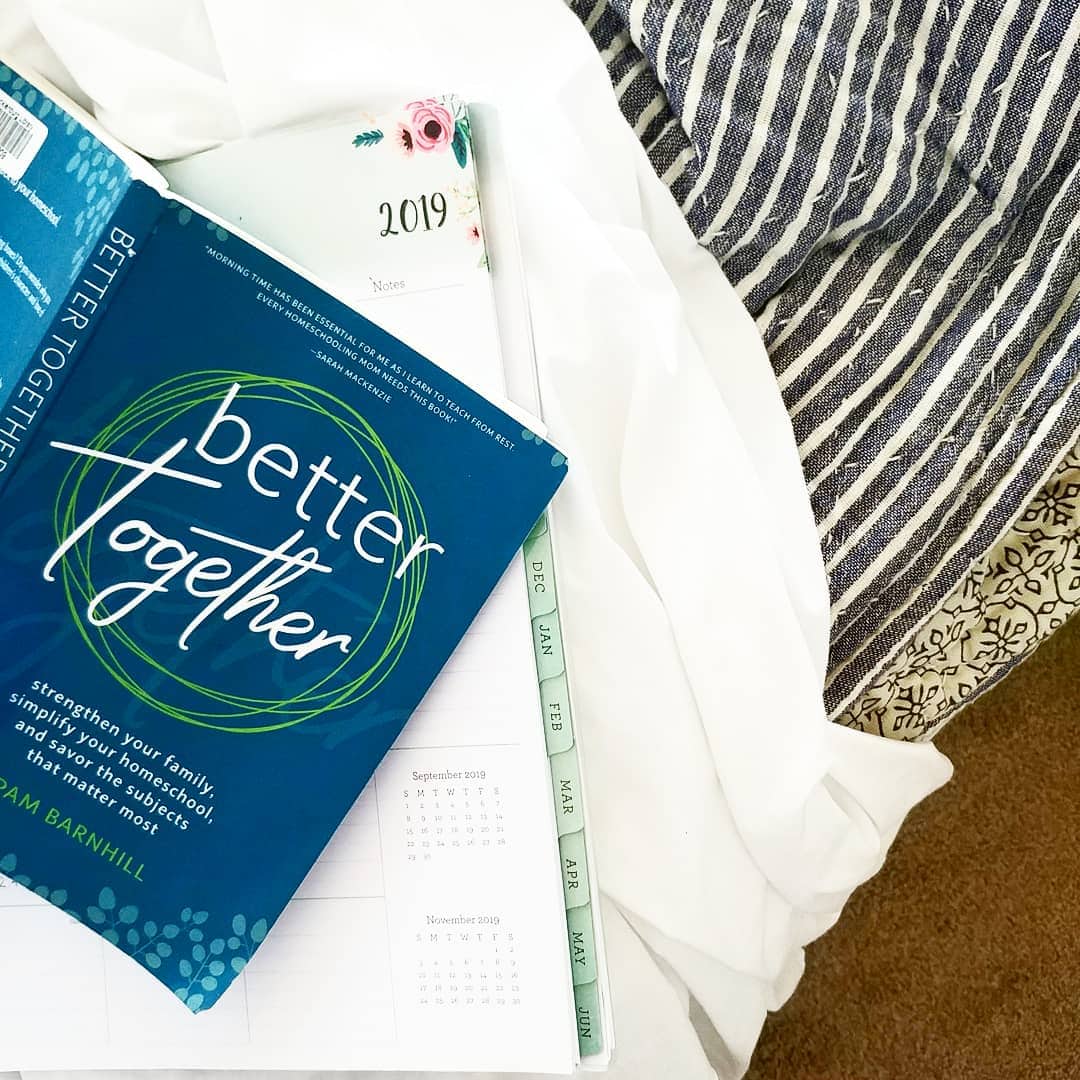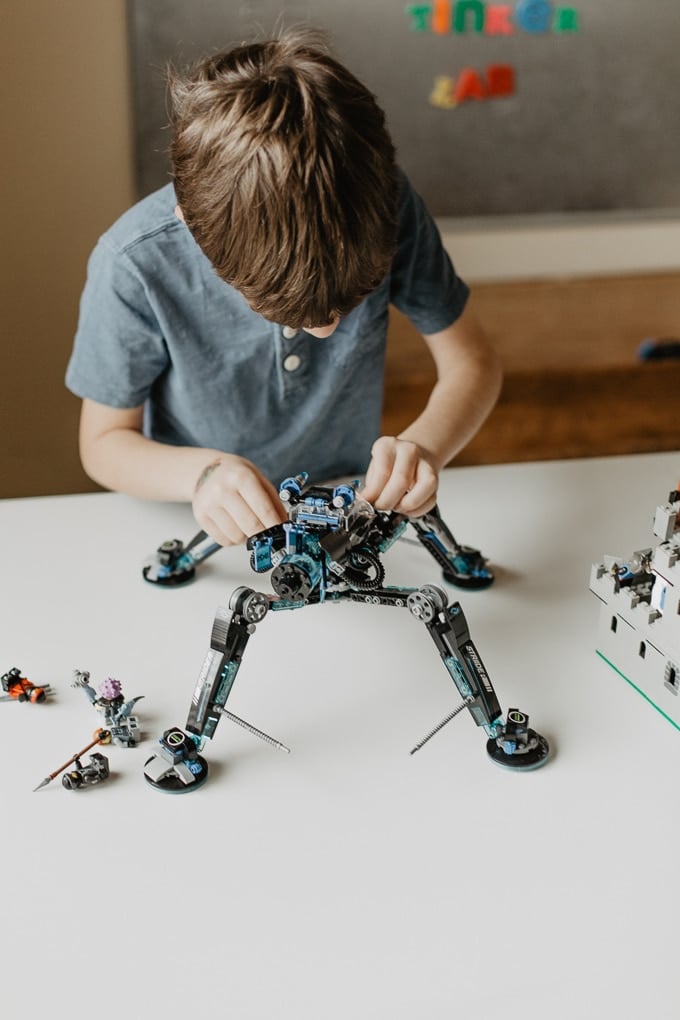Minimalist Homeschooling
Over the last few years, I have spent intentional time pursuing a more simplified lifestyle. This longing for less has impacted the overall feel of my home, our family’s schedule, and yes, our homeschooling as well! Minimalist Homeschooling may sound like an approach that is less-than in some way, but for our family, we’ve found it to include so much more of what matters most.
The great thing about minimalism is that you get to define what it means for your family!

Get our THIS LITTLE HOME OF MINE nEWSLETTER
Delivered directly to your inbox!
What Is Minimalism?
Minimalism has become such a buzzword in recent years, so it’s helpful to begin any discussion about minimalist homeschooling with a definition of terms.
What does “minimalism” mean?
Minimalism is intentionally choosing what is the most necessary and important, and making them your priority.
That’s it!
That’s the goal.
It can work out in many different ways, depending on what you apply this principle to in your life.
However, it’s important not to put the cart before the horse! For example – taking a minimalist approach to items will frequently result in decluttering, but decluttering in and of itself is not minimalism.
Make sense?
It’s not “less for the sake of less”. It’s determining what things are important and align with your goals, and getting rid of the excess.
A minimalist lifestyle can also be applied to how you use your time.
Every person has many activities and responsibilities vying for their piece of the 24-hour pie.
Minimalism encourages us to look at the things in our schedule and determine which are most necessary and important. Those are the priority. The rest can go.
Now, this should be intentional!
Taking a minimalist approach to your time does not mean just dropping something because you don’t want to do it. Minimalism should never breed laziness! But – it should lead to restfulness.
Why Take A Minimalist Approach To Homeschooling?
Minimalist homeschooling means defining your educational priorities, and then doing the hard work of discerning whether your time, curriculum, and environment alight with those priorities.




It’s hard work, and everyone has different values so you truly have to do the work yourself. So why bother?
- It Keeps You Focused. Or perhaps rather, it allows you to focus on what’s important without getting distracted by the excess. Once you’ve wrestled with nailing down your goals for your child’s education, it becomes easier to see what aligns with those goals, and what doesn’t. You then can focus on those things that fit your educational priorities, and drop those things that don’t with less guilt.
- It Frees Up Your Time. Now, there’s only so much time in a day. There is always going to be an element of activity in the life of homeschool moms. But when you drop those things that don’t align with your goals, you will likely find yourself running to fewer clubs, activities, and extracurriculars. You’ll have more time to spend as a family, enjoying true leisure.
- It Quiets Perfectionism. Many homeschool parents struggle with some level of perfectionism. You’ve decided to place the mantle of your child’s educations upon your own shoulders. It’s a serious responsibility! But taking that responsibility seriously doesn’t mean your family can do everything. You are freed to look the lie of “If you don’t do this subject or that activity, you are doing your child a disservice.” in the face and tell it to go. You’re not held to a standard set by others. You only have to answer to the values you’ve set.





If you’d like to read more about considering a more minimalist approach to homeschooling, check out Minimalist Homeschooling by Zara Fagen and Teaching From Rest by Sarah Mackenzie.

I love discovering encouraging books that I can share with you, and I always make sure to share them here.

When it comes to simplifying homeschooling life, I have found such wonderful encouragement from Pam Barnhill.
As our family has continued to grow, the inspiration I found in her book Better Together has helped me consider practical things I can do help our family’s day-to-day flow more smoothly.

Steps To Implementing A More Minimalist Homeschooling Approach
If your current homeschool lifestyle is filled with loads of extracurricular activities, too much curriculum, and homeschool supplies shoved in every drawer and shelf, it can be daunting to figure out how to start your minimalist homeschool journey!
Here are some solid first steps.
- Define Your Priorities. As stated, minimalism isn’t just “less for the sake of less”. It’s intentionally choosing what is the most necessary and important, and making them your priority. So, the first step is to sit down and determine what is most necessary and important in your child’s education. Without those parameters in place, you’ll simply be dropping subjects or activities out of avoidance.
- Start From Zero. Rather than looking at your long list of subjects and activities and trying to figure out what to cut, start instead from a blank slate. Then, consider each subject or activity separately, determining whether they align what your values for homeschool life. If they do, then add them to your list.
- Be Intentional With Subjects. A minimalist homeschool curriculum should be intentionally crafted. We want to make sure our daily routines, homeschool day, and our course subjects all fit into our priorities and goals. Which subjects are the most important ones to cover? These subjects, then, should receive most of your budget and time. Or, consider how subjects overlap. Do you need a separate handwriting curriculum, or can you be intentional about it during their English language or creative writing subjects?
- Pare Down Your Stuff. Minimalism will affect not just your course load, but also your leaning environment. There are many lovely and useful manipulatives, curriculums, and books out there, but do they align with your homeschool priorities? That should the lens with which you look at your homeschool materials – not their aesthetics, not how popular they are on social media.
- Limit Extracurriculars. Many homeschool families have their children enrolled in a large number of activities. But is there enough time for all of them, without sacrificing on your priorities? Instead of joining every sport and club, choose just one or two that are important to your child. Perhaps set a boundary that only one child can be in an extracurricular at a time. You’re not limiting them – you’re giving them the gift of time to explore their interests.




How To Have Less Clutter In Your Learning Environment
Even good things can pile up and become a burden of clutter.
Thankfully, there are many ways for a minimalist homeschooler to have less stuff and more space in their homes.
- Use Household Items. You can likely use many items around your house as homeschool supplies, without needing to buy anything separate! For example, math manipulatives are pretty, but beads, toothpicks, or matches work as counters just as easily. Use pocket change instead of buying pretend coins. Instead of buying a full science kit, find a book of science lessons that use supplies you already have.
- Borrow, Not Buy. This tip will save you money as well as space! Your local library should be your best friend. Many libraries will have not only reading books, but also full curriculum on their shelves. Even if your library is sparse, it likely offers inter-library loans, at no extra cost! Or, do you have a fellow homeschool friend who is a grade or two ahead of you? Ask to borrow some of their resources!
- Go Digital. Many great books and curriculum are available online, and digital books take up no space on your bookshelves. There are also online courses that can take care of or supplement your homeschool lessons.
Let me Tell You about Outschool
There are a variety of different online teaching platforms available for families today! With many of them being secular platforms, I have been hesitant to give them a try.
However, we have had other Christian families recommend a few specific teachers to us, and thanks to their guidance, we have discovered some amazing instructors on Outschool!
Not all teachers/courses are created equal, so we do encourage our friends to choose wisely.






We recently warned our readers about Prodigy Math – a secular online math program that began to incorporate woke gender ideology into their math curriculum.
However, Outschool is set up different. It is a platform where individual teachers offer courses they themselves have put together to offer to students.
While the Outschool platform does allow instructors to offer programs and courses that would not align with our belief system, there are also some gems out there!
We know that some families feel most comfortable avoiding the company altogether (We understand and respect that caution.), but if you want to give Outschool a try, here’s $20 in Outschool credit you can use toward classes!
We also want to share some of fantastic teachers we’ve enjoyed, and we plan to update this list for you in the coming months.
For younger students, our family recommends:
- Teacher Stephanie-Certified Elementary Teacher – Math and Reading
- Laura Rupers, M.Ed., Certified Reading Specialist – Reading and Music
For older students, our family recommends:
- Tina Jobe – Private Tutoring for Math and Writing; Writing Classes by Request
- Tim Stephens – History, Science, and Art
- CarreiraChess – Chess Instruction
- Whitney Etherington – ASL Instruction
- Katie Slessinger – We have tried her Titanic Class and her Oreo Phases of the Moon Class.
- Anna Starkova – Art
- Lila, MFA – Art
Hopefully you spot something your kids would like to try – and maybe even discover a new favorite of your own!








Does your child want to learn to play chess?